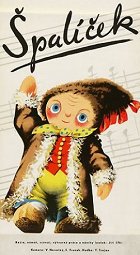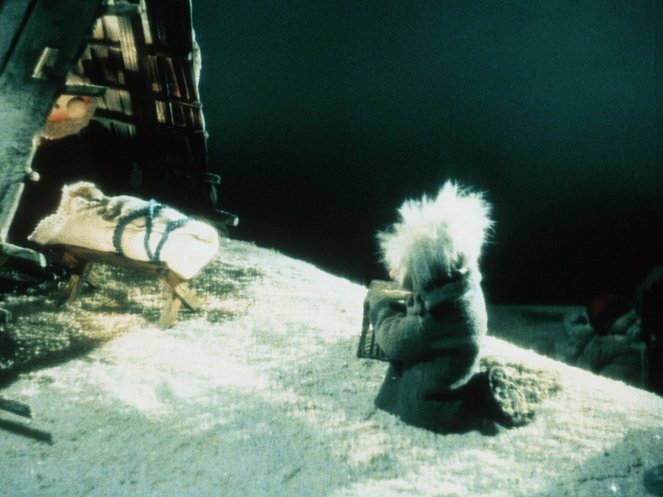Sinopsis(1)
The first feature length puppet film of Jiří Trnka poetically reveals folk customs and traditions of the Czech countryside that have been preserved for centuries. A kind of cinematic suite based on Aleš’s “Collection of National Folk Songs”, it is made up of six related parts, each set in a different season. A lyrical narrative acted out by simple puppets is underlain by the music of Václav Trojan with motifs from folk songs sung by the children of Kühn’s choir.
The motion-picture, awarded the Gold Medal at the IFF in Venice, came about by joining six originally independent short films (Carnival, Spring, The Legend of St. Prokop, The Fair, The Feast and Bethlehem). Jiří Trnka, who shared not only in the production of puppets and scenery but also in the creation of the screenplay, could fully engage his sense for plasticity as well as his talent for set design, thus giving the genre of puppet film, otherwise considered undemanding, new form. Along with Hermína Týrlová or Karel Zeman, he started off the golden era of Czech puppet and, consequently, animated film which has been met with appreciation at international film festivals.
(Dafilms.cz)
Reseñas (4)
The one time I proudly set off to admire a Czech national treasure, I have ended up helplessly staring at an empty text field where my review should be, because I can't think how to lie my way out of such disappointment. There's little as truly Czech, nationalistic, and suitable for international boasting as Jiří Trnka and the Czech painter Mikoláš Aleš. The reality, however, is that most of the film is spent with a brave children's choir singing robustly which is a bit unbearable when combined with endless celebrations and holidays of the ensemble and the musicians, and above all, isn't even worth listening to. It's enough to make you forget the beautiful puppets and bunches of ideas, which Trnka later brings almost to perfection, because of all the noise. And so the legend of Saint Procopius stands out conspicuously with its richness and atmosphere, while something like the Spring interlude just seems endless. There is nothing for it but to shake my head and turn to literally anything else from one of the giants of Czech cinema.
()
The Czech Year was a modern project and an extraordinary artistic creation in its time, but after many decades, I have to say that I look at it with respect but without any emotional impact. I simply recognize it as a great classic, but at the same time, I feel that today's younger generation will not find it appealing. The Czech Year has simply become outdated in terms of its pace and visual concept. The current generation lives differently, and this world of folklore is as distant to them as a museum exhibition of old folk customs from the 19th century. I'm giving it 3 stars for the puppets and the knowledge that this film belongs to the golden treasury of Czech cinema, despite my distance from it. Otherwise, the Prague Philharmonic Children's Choir, Václav Trojan's music, and the somewhat outdated animation give me a dusty impression, which only contributes to an overall impression of 55%.
()
This is admittedly a good film and can be described as the first full-length Czech puppet film, but not having a proper copy available and there are some things missing from the versions aired on TV.
()
Beautiful example of Trnka's animation for children, but not only for them. Unfortunately, I have some resistance to the rural environment as it is presented here, and it slightly spoils the whole impression for me. I particularly liked the first story, "Masopust" (Carnival), which literally enchanted me with its musical aspect. It really got to me.
()

